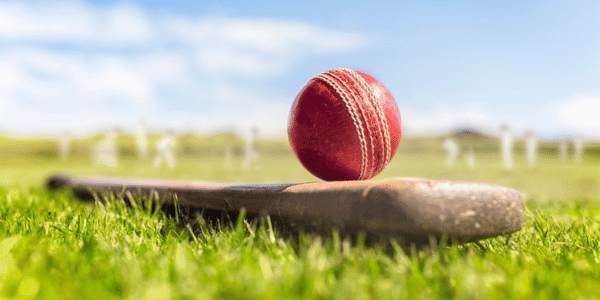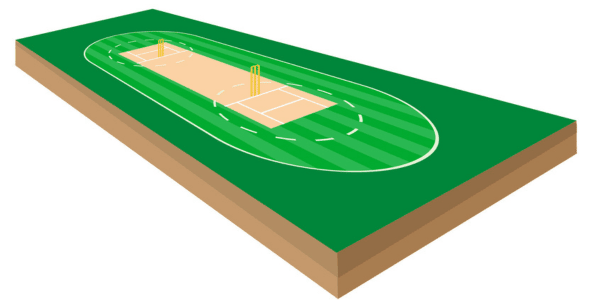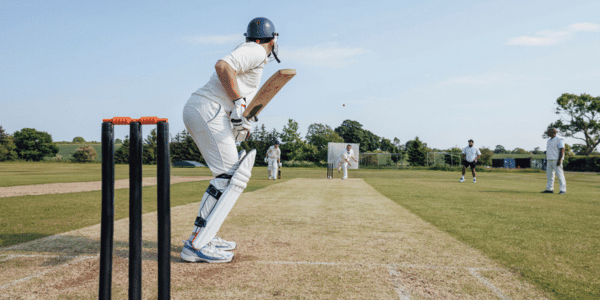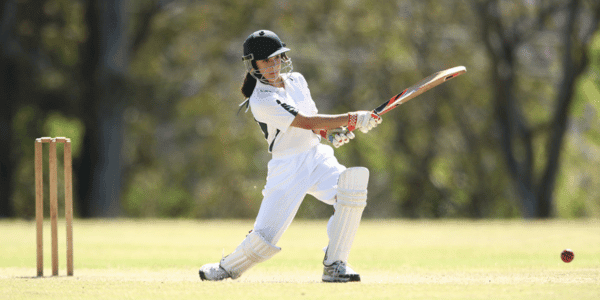How to Play Cricket
Cricket is one of the world's biggest sports, particularly in countries like England, India, Australia, and South Africa. While an estimated 200,000 people play cricket in the U.S., the game's growing popularity has sparked interest in recent years. So, how do you play cricket?
If you're curious about cricket, take a seat. This guide will walk you through how to play cricket, breaking down everything, including the cricket positions, rules, and field. Keep reading to build your bowling and batting knowledge!

What Is Cricket?
Cricket is a bat-and-ball sport, typically played between two teams of 11 players each. In every match, each team has the opportunity to bat and attempt to score runs in an inning, while the other team bowls the ball to the batter and fielders, trying to dismiss batters and limit the runs, similar to outfielders in baseball.
Unlike baseball, there's no strike system. Instead, bowlers must legally deliver the ball to batters six times, in what's known as an over, to keep matches moving. The team that scores the most runs in a match wins. Matches take place in various formats, including:
- Test cricket: The traditional format of the game. This endurance-based version of the game tests each team's will to win, as matches are played over a span of five days, with at least 90 overs played each day.
- One-Day Internationals (ODI): Matches completed in a day, with each team batting for one inning of 50 overs. The Cricket World Cup is played in this format every four years.
- Twenty20 (T20) cricket: Matches completed in a few hours, with each team batting for one inning of 20 overs.
Read More: Batter Up! A Baseball Guide for Beginners
When Was Cricket Invented?
Most historians trace cricket's origins to 16th-century England, when shepherds and farmers played a primitive version of the game using sticks and balls made from wool or leather. By the 17th century, the sport had gained popularity across English villages, evolving into a structured pastime with written laws.
As the British Empire expanded, so did the game. Sailors and colonists carried the sport to far-flung regions of the world, including India, Australia, the Caribbean, and South Africa. By the 19th century, international matches began to emerge.
Over time, new formats modernized the sport: One-Day Internationals debuted in the 1970s, followed by the fast-paced T20 cricket format in the early 2000s. Today, cricket is watched by billions, uniting fans from all walks of life.
How To Play Cricket
The Cricket Ball
Cricket is played with a hard, spherical ball. It's usually made with a cork wrapped in string that's covered in leather. For comparison, cricket balls are slightly larger and heavier than a standard baseball. The fresher the ball is, the harder and bouncier it'll be.
The Cricket Field & Pitch
At the center of the cricket field lies the 22-yard-long, narrow rectangular pitch. It's where most of the action occurs. At each end of the pitch are three wooden stumps topped by two smaller pieces of wood known as bails. All together, these pieces are known as the wicket. Around the pitch is the outfield, a grassy playing area, with a boundary marking the edge.
If the ball crosses the boundary after being struck, teams score four or six runs, depending on whether the ball crosses with a bounce or through the air. Near each wicket are crease lines: the popping crease, where the batter stands to bat, and the return creases, which help define where defenders, called bowlers, must stand.

Game Format
To start a cricket match, the team captains toss a coin. The winner chooses whether to bat (play offense) or bowl (play defense) first. Each match is divided into innings when one team bats and the other bowls and fields. Depending on the format, teams may have one or two innings each.
Bowling and Batting
On the fielding team, one bowler delivers the ball with an overarm bowl from the strike end of the pitch to the batter at the other end. Each delivery must land in the pitch area and not go beyond the return creases. After one over (six proper deliveries), another bowler starts. When an inning ends or there is a dismissal, the batting team sends out a new batter.

Running and Scoring Runs
Once the ball is delivered correctly, the batter at the strike end attempts to hit it and score. After hitting the ball, batters may run between the two ends of the pitch. Each completed run adds one to the team's total.
If the ball crosses the boundary of the field, a team earns four runs or six runs, depending on how that happens. When the ball bounces before crossing, four points are awarded to the offense. If it flies over the boundary without bouncing, the offense gets six runs. Batters can also score runs known as extras when the bowler or fielder makes an error.
Read More: How to Play Soccer: Basics, Rules, Positions, & More
Dismissals (How Batters Get Out)
To end an inning, bowlers must get ten batters out. Batters can be dismissed in several ways, including:
- Being bowled: When the ball hits the stumps and dislodges the bails.
- Getting caught: When a fielder catches the ball before it touches the ground.
- Leg Before Wicket (LBW): When a bowled ball would have hit the stumps, but it's intercepted by the batter's leg.
- Run Out: When a fielder breaks the stumps with the ball while the batter is outside their crease during a run.
- Being stumped: When the wicketkeeper breaks the stumps with the ball while the batter has stepped out of their crease while swinging.
- Hit Wicket: When a batter accidentally dislodges the stumps with their own bat or body during the act of playing a shot.
Cricket Positions & Roles
In a cricket match, 11 players on each team fill the following roles:
- Opening/top order batters: These batters go out first and face a new, fresher ball.
- Middle/lower order batters: Batters who face the ball later when the ball is older and the pitch has worn.
- All-rounders: Players capable of both batting and bowling effectively.
- Wicketkeeper: The only fielder standing behind the stumps, wearing gloves to catch balls, stump batters, and direct fielders.
- Bowlers: Players who deliver the ball to batters with speed or spin.
- Fielders: Defensive players placed strategically around the field, tasked with stopping runs. There are more than 30 specific fielding positions, with each one related to a particular part of the field (i.e., mid-on and mid-off for the two sides of midfield)

Cricket Terminology
Watching a match is your best bet for understanding how to play cricket, and you'll need to learn the lingo to know what's going on. Here are the most important terms:
- Runs: Cricket's points, earned via running or the ball crossing boundaries.
- Wicket: A dismissal, or the physical stumps and bails.
- Over: A set of six legal deliveries.
- Innings: One team's turn to bat.
- Boundary: The edge of the playing field.
- Duck: A batter getting out without scoring any runs.
- Century/Half-century: Scoring 100 or 50 runs respectively.
- Maiden Over: An over in which no runs are conceded.
Read More: Football Guide: What Do All Those Calls Mean?
How to Play Cricket and Other Sports
Once you know how to play cricket, learning other sports will be a breeze. Read our "How to Play Tennis" guide to understand the popular racket-and-ball game better. It covers everything from rules to scoring, so you're ready to master match play.
How to Play Cricket FAQs
What does "LBW" mean in cricket?
A batter is out "leg before wicket" (LBW) when their body intercepts a bowled ball that would've hit the stumps.
How many wickets are in cricket?
There must be 10 wickets, or dismissals, in cricket before an inning ends.
Is cricket easy to learn?
Understanding how cricket works can be straightforward, but becoming a skilled player or expert fan requires dedication and attention to detail to grasp all the game's rules, strategies, and terminology.
